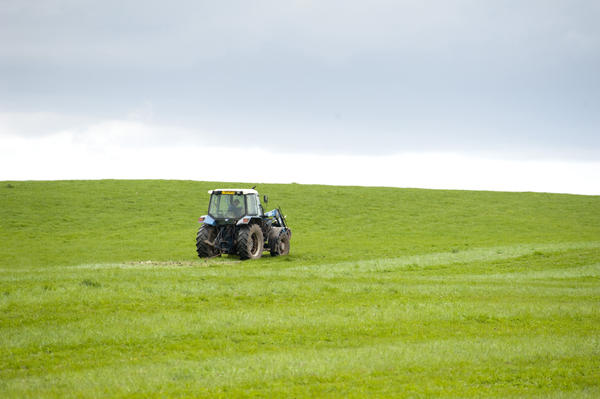Pasture Management 101
Is your pasture lush and green or sparse and weedy? Maintaining an established pasture is easier than you think. There are several key ingredients to basic pasture management: soil, fertilizer, weed control, and rotation.
Soil
The first step in good pasture management is understanding your soil and what it needs. In order to do this, you must have your soil tested. Your local Ag Extension service should be able to provide a soil analysis test for a small fee. It's as simple as taking a small freezer bag, filling it with 4-6 different soil samples from various location in your pasture(s), and dropping it off at your Extension office.
A soil test will reveal the pH and nutrient levels in your pasture as well as provide lime and fertilizer recommendations. It takes the guess work out of cultivation and allows you to spend your time and money wisely.
A best practice is to test your soil every 2-3 years. That way you can continue to give your grass exactly what it needs to flourish and provide the most nutrients to your animals. Guessing what your soil needs can lead to over spending on fertilizer that you may not need or even worse, damaging your grass.
Fertilizer
In addition to purchasing the fertilizer recommended in your soil test, you also have home grown fertilizer just waiting to be utilized. Manure can easily be spread across the pasture using a harrow or chain link. There are plenty of things around the farm that can be turned into a home made manure spreader. No need for expensive equipment to perform this task.
Spreading manure will not only help fertilize the pasture, but it may help reduce the presence of parasites. When exposed to warm air, some stages of the parasite life cycle may be broken. It is best to drag or harrow once your animals have moved to a different pasture and will remain off of it for several weeks.
Weed Control
Weeds. The arch nemesis of lawns and pastures across America. There are several ways to approach weed control. Before selecting a method or combination of methods, it is important to know what type of weeds you are up against. Annual or perennial? Broad leaf or grass? Take a short tour around your pasture(s) and try to identify what you find.
Mowing can be a very easy and cost effective way to help reduce the weed population in your pasture. However, timing is key. Mowing before weeds bloom is critical. Once a weed begins to produce seeds, mowing can actually increase the number of weeds by helping spread the seeds. Mowing is generally most effective on broad leaf and annual weeds.
Herbicides can be a very effective weed management tool, especially with perennial weeds. However, they can be relatively expensive. We recommend doing your homework first. Identify the type of weeds in your pasture in order to select the appropriate chemical. Understand pre-emergent vs post-emergent herbicides as that can be critical when timing applications. Determine if your entire pasture should be treated or if spot treatments would suffice. Use the recommended application rate to avoid grass injury.
Burning can destroy annual seeds that might be lurking around your pasture as well as help control unwanted brush. Timing is critical. Burning too early can cause some perennial grasses to be susceptible to late freezes. Burning too late may damage grass that is coming out of dormancy and starting to green. Your local Ag Extension office should be able to recommend the best time window for burning grass in your area as well as tips on safe burning practices.
Rotation
Rotating pastures, if you are able to do so, is another important aspect of pasture management. If left in one pasture too long, livestock can over graze until the ground is bare leaving nothing but dirt. That is when weeds love to take over a pasture. On the other hand, grass that is too tall may not provide the high quality nutrients you seek. Plant maturity is biggest factor that effects forage quality. Generally, the older the plant the less nutrients it provides.
Rotation timing varies based on a number of factors: the size of the pasture, the number of animals on it, rainfall, temperature, drought etc. The key to optimal rotation is to pay attention to the height of your grass. Typically, you want to start grazing on grass that is 6-8 inches high and move animals off once the grass dwindles to 2-3 inches high. Grass under 2 inches is in danger of being overgrazed and permanently damaged.
The Rider Marketplace
International Horse News
© 2026 Created by Barnmice Admin.
Powered by
![]()
-
Quick Links
- Horse Blogs
- Horse Forums
- Horse Videos
- Horse Photos
-
Sister Sites
- The Rider Marketplace
- The Rider
- Equine Niagara News
-
Helpful Links
- Advertise With Us
- Barnmice Tour
- Feedback
- Report an Issue
- Terms of Service
© Barnmice | Design by N. Salo

You need to be a member of Barnmice Equestrian Social Community to add comments!
Join Barnmice Equestrian Social Community